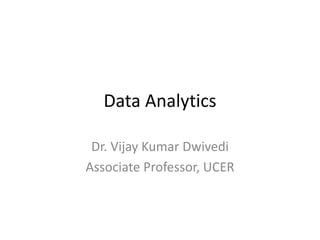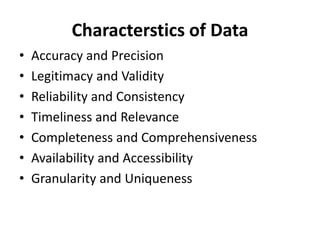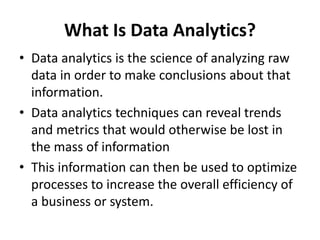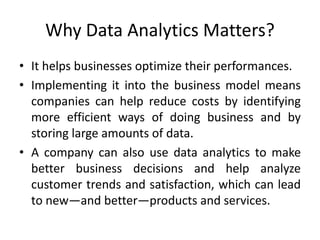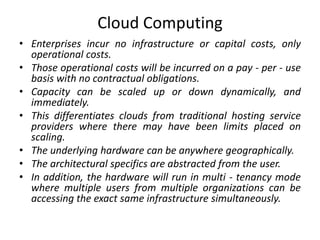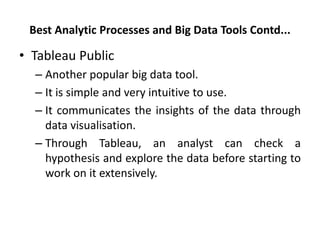Data can come from internal or external sources. Internal sources include company reports and records, while external sources are outside the organization, like information obtained from other companies. There are various methods for collecting primary data, like interviews, surveys, observation, and experiments. Secondary data has already been previously collected and can come from internal sources within an organization or external sources outside the organization. Data can be structured, semi-structured, or unstructured, and varies in its level of organization and ability to be stored in a relational database. Key characteristics of good data include accuracy, validity, reliability, timeliness, completeness, availability, and accessibility.
